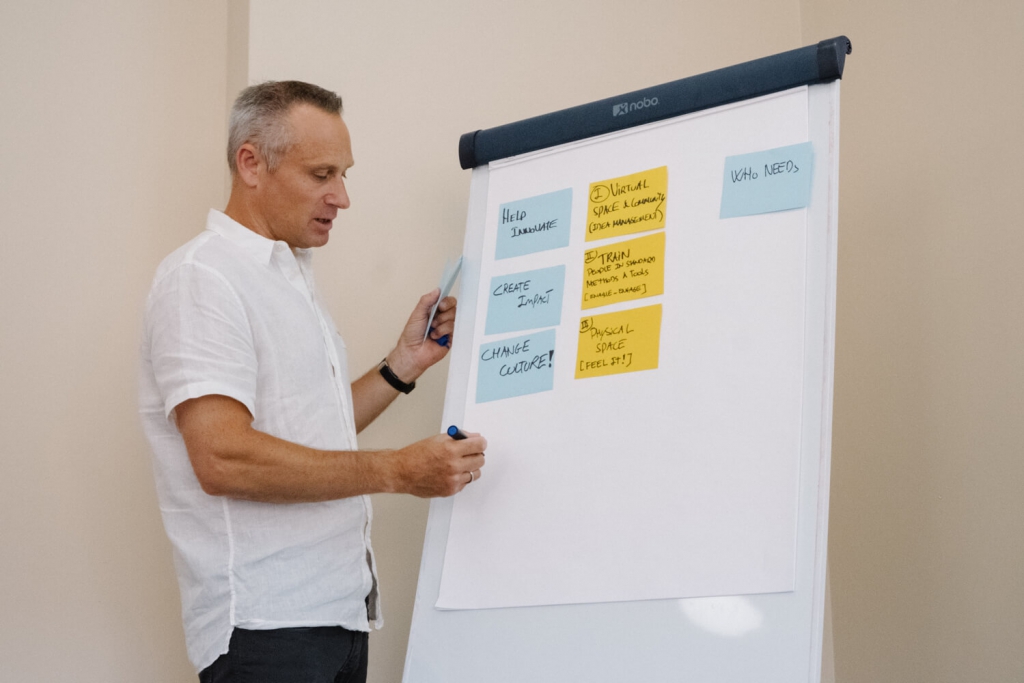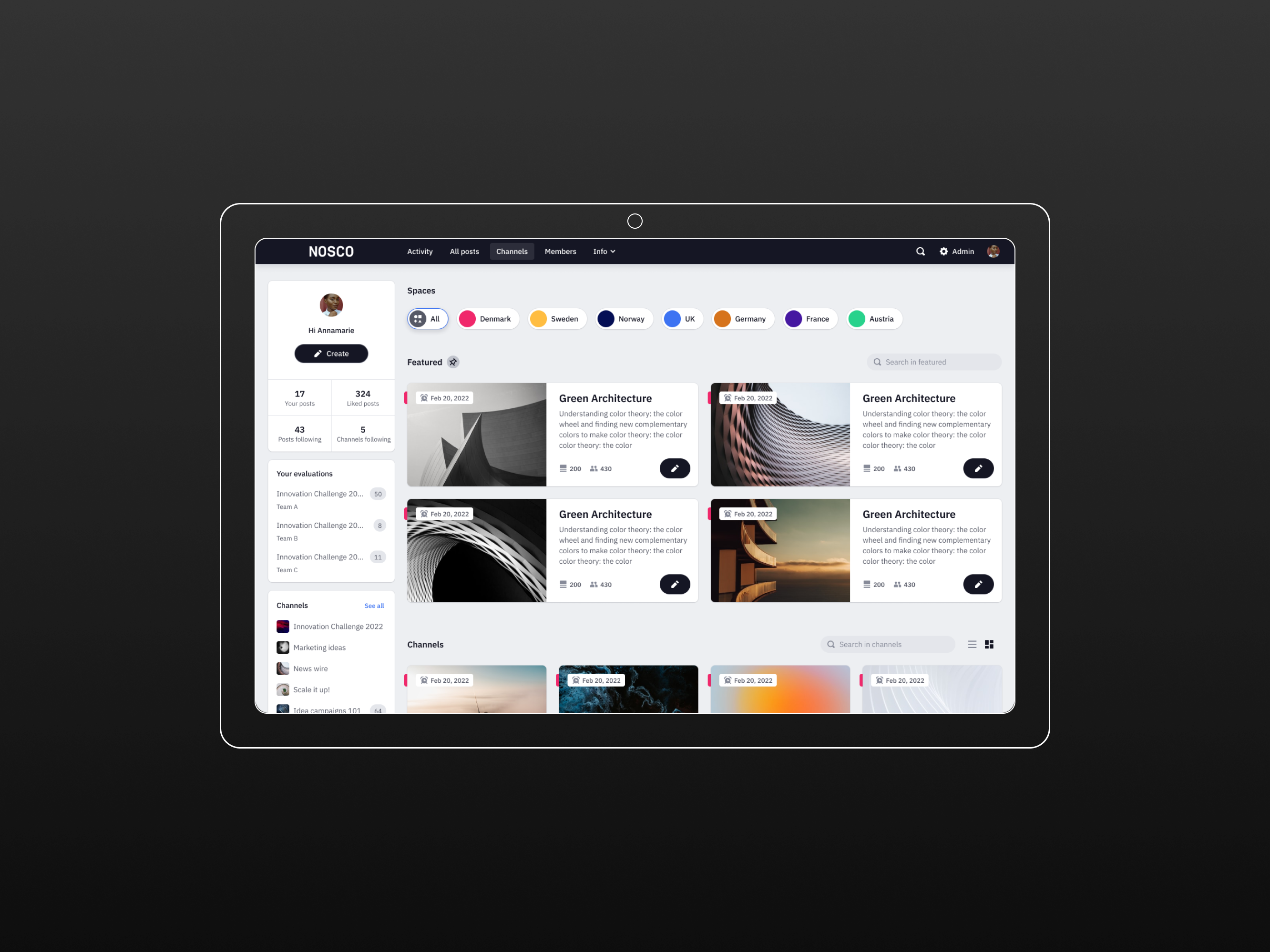
Embracing diversity boosts innovation & financial results
How diversity encourages a more innovative talent pool and ultimately empowers your employees to reach their full potential
Written by
April 29, 2022
There is plenty of evidence that suggests that diversity boosts innovation, but we still often get the question of 1) what diversity actually is and 2) how to work with it in relation to innovation.
A (2018) study by Harvard Business Review found that the most diverse companies were also the most innovative, outperforming their competitors by 19%. According to a 2020 Forbes article based on a BCG study (BCG Innovation and Diversity survey 2017), diverse management teams were more innovative than less diverse teams. Companies with above-average diversity produced a greater proportion of revenue from innovation (45% of total) than from companies with below average diversity (26%). This 19% innovation-related advantage translated into overall better financial performance.
Diversity and inclusion can be defined through a variety of lenses. Age, race, ethnicity, cultural background, gender, sexual orientation, and religion, immediately come to mind, but also educational background, managerial experience, neurodiversity and even personality traits have been considered (Cultureamp). Inclusion at the workplace takes diversity a step further and focuses on providing everyone with equal access to opportunities and resources (Builtin). The concept of diversity can thus be defined quite broadly, which does not make it easier for managers to work with and promote, despite recognising its importance.
Achieving workplace diversity means you are empowering your employees to reach their full potential and encourage a more innovative talent pool. But even if you have a diverse workforce, how can you ensure that you don’t end up involving the same “usual suspects” and increase engagement across organisational divisions and groups?
Adjust your communication
When we communicate our innovation initiatives, we tend to assume that people have the same knowledge about innovation as we, and that everyone will find it as exciting as we do. But that is not the case for all. It is rather the exception. That type of communication will speak to those employees that are already involved in innovation and the “usual suspects” that find these types of initiatives interesting. If we want to engage other groups, and more diverse groups, we thus need to rethink our communication.
One of our industrial clients, for example, adopted an idea management program, where they wanted to hear the ideas of all their employees – everyone from blue collar workers to senior management. They implemented a strategy that would allow them to engage their office-based workers via digital channels, their intranet, emails etc. But crucially, they made sure to target the blue-collar workers who worked in the factories, without direct access to a computer. Therefore, they utilized analogue channels, such as posters and notice boards to advertise the idea gathering project, and even built ‘submission stations’ for workers to submit their ideas.
Rethinking the means and channels of communication is thus one way of adjusting our communication efforts. We have seen many creative versions of communication, including everything from make-your-own paper planes, 2 meter paper rockets, foils on elevator doors, cakes with messages on them etc. In our experience, for communication to be engaging it must be fun, stand out from other corporate communications, and it must be right where people work and impossible to miss. We, as innovation managers, need to get out of the office and actually visit the groups we want to engage. It might take more resources, but it is also much more efficient in terms of increasing engagement and inclusion of all employees.
Another aspect that we need to consider is how we communicate. Subconsciously, we will assume that 1) people know what innovation is about and 2) that they believe that they have a role to play when it comes to innovation. Many employees in companies do not necessarily see themselves as being involved in anything innovation-related. And it might be that they are not interested, but it might also be due to a lack of knowledge. We thus need to adjust our messaging to something that they can understand and that relates to their specific situation. And it might be that we should not even use the word “innovation”, as the word in itself alienates some people.
Promote self-appointed teams – and nudge participation
Teams are where the actual magic of innovation happens: it is through the work of teams that ideas get matured, tested, scaled or stopped. But how do we create great teams built on principles of diversity and inclusion?
At Nosco, we believe in the power of self-appointed teams. Teams where the members themselves have signed up to be part of the team. But as with our communication efforts: if we do nothing, it will be the ones already engaged in innovation and the usual suspects that will sign up for the teams. Typically, it is less hard to find product- and tech people to join teams, whereas profiles in finance, marketing, operations et al. are harder to find. To get self-appointed and diverse teams, we need a bit of facilitation and nudging.
One of our chemical industry clients decided to put the concept of self-appointed teams into practice. 15 ideas had been nominated and asked to assemble teams around those ideas. But most of the idea authors only had networks within their own departments and did know how to find team members beyond with different skills and areas of expertise. The project team thus decided to help the idea authors find team members by reaching out to managers of departments not usually involved in innovation, but with great relevance to the teams (e.g. finance and marketing). The managers then helped identify a pool of people and set up for individual talks with the idea authors to find out if there was a match.
Final Thoughts
Building a culture of innovation based on diversity and inclusion is not an easy job and it comes down to much more than ticking off roles and job functions. It is about bringing a variety of perspectives together, respecting and utilising the strengths of those involved.
We can only recommend leaders to trust their employees when it comes to forming diverse and inclusive innovation efforts. Trust in the power of honest communication that embraces the diversity of any organisation, helps build diverse teams. Let them lead the idea through the innovation process by utilizing relations based upon knowledge, experience, and influence in their network and not so much by navigating company hierarchies.

Thilde is an experienced consultant with a background strategy, business development and innovation within large corporations. She is the “whisper in the ear” of campaign managers and is specialised in communication and mobilisation. Thilde also has a long-term connection to Copenhagen Business School, acting as a lecturer and examiner within innovation and strategy.
MORE ARTICLES






